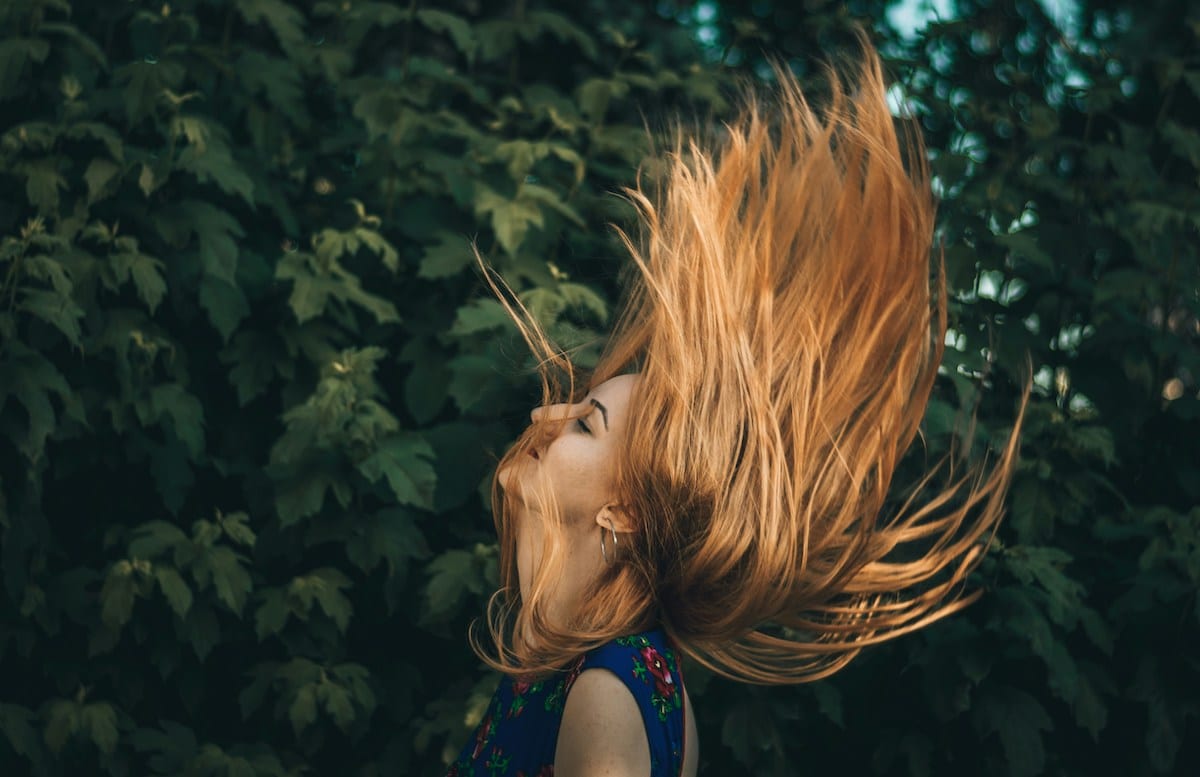What is the average length of a hair life cycle?
Our hair is constantly being renewed, with an average life cycle of 3 years for men. For women, it's longer: between 4 and 6 years.
During this period, each hair grows continuously. When it dies, it is replaced by another hair generated directly by the same hair follicle. But the dead hair doesn't fall out immediately. It waits another two or three months, until the new hair is strong enough (strong shaft and bulb sufficiently anchored in its hair follicle) to drive it out of the hair follicle for good.
What are the phases in a hair's life?
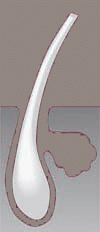
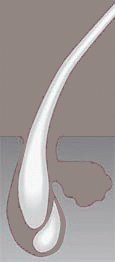
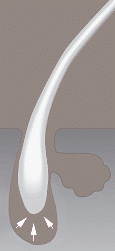
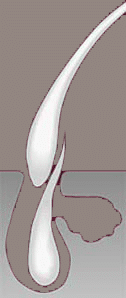
A looping scenario
In concrete terms, the hair cycle follows a loop scenario which takes place in 4 successive phases before returning to the first.
- ANAGENA (from the ancient Greek "ana" meaning "above")
Growth phase (duration: 3 to 5 years, depending on sex and individual)
During this phase, the hair is fully alive, the growth of its keratin (the hair shaft) is constant and regular, and its root fills the hair follicle, right down to the base. - CATAGENE (from the ancient Greek "cata" meaning "below")
Degradation phase (duration: 15 to 20 days)
Hair is between life and death.
Its root goes up towards the epidermis and its activity stops abruptly.
The hair then stops growing, but it doesn't have to leave the site for that long - it has to wait for the next generation. - TELELOGEN (from the ancient Greek "telos" meaning "end")
Rest phase (duration: 2 to 3 months)
This time, the hair is dead and ready to fall, like ripe fruit falling from the tree.
But it will remain on its head until the root of its replacement is strong enough to dislodge it. - The new growth reaches the surface of the scalp and the old hair falls out on its own (hair loss).
- NEW ANAGENA
The new hair begins to grow: the curl is complete and the hair cycle is restarted. A new process begins.
When the tempo picks up...
And yet, sometimes a hair's life cycle accelerates, which is the first sign of androgenetic alopecia.
All the other symptoms (progressive thinning of the hair, difficulty styling the hair and hair that becomes shorter and shorter because the hair growth phase - the anagen phase - is shorter and shorter, etc.) are simply the consequences of the hair cycle running out of control. Initially, the problem stems from the fact that androgens hasten the pace of the anagen phase, forcing the hair into the telogen phase earlier and earlier, leaving the hair follicle insufficient time to produce a strong keratin, so good quality hair.
A vicious circle then sets in: the faster the hair is produced, the faster it falls out and the faster the hair cycles follow one another, each time producing a weaker, shorter hair than the last. Eventually, the capital of hair cycles is depleted and the follicles, having aged prematurely, become totally unproductive. Before reaching this extreme, it's vital to treat the following conditions your hair's vital functions as soon as you notice that your hair is thinning, as thinning is the first visible symptom of the hair deterioration process.
For a more detailed approach, read how the hair follicle works ?.
Does hair grow for life?
From a genetic point of view, researchers agree that our hair is programmed to renew itself between 25 and 30 times during our lifetime, for both men and women.
Each hair follicle is thought to be programmed to 'produce' between 25 and 30 new hairs.
This means that our hair is programmed to grow for life, constantly producing new cells!
If the hair cycle goes into overdrive (a process of hair degradation known as "androgenetic alopecia", leading to premature exhaustion of the hair follicles), our body consumes our hair renewal capital too quickly and, as a result, we no longer have enough reserves to have hair throughout our lives.
This hair renewal capital can also be consumed early by those who suffer from trichotillomania (the act of pulling out one's hair, a disorder that mainly affects women).
How fast does hair grow?
The speed at which hair grows varies from one individual to another. Over the course of a hair cycle undisturbed by the activity of negative factors such as the hair follicle's receptivity to androgens, our hair grows by 12 to 15 centimetres a year.
What slows hair growth?
The two main causes of slow hair growth are :
- The first is androgenetic alopecia. As we have seen, in this case, the hair grows shorter and shorter and thinner and thinner. But it also grows much more slowly until it is nothing more than a little fuzz by the time it falls out. Finally, since hair replacement is no longer equal in quantity or quality, hair loss is inevitable if nothing is done to slow the process.
- The second cause of slower hair growth is linked to insufficient nutrition of the hair follicle (the factory that makes hair). When everything is working properly, the blood micro-circulation supplies each hair follicle - via the blood cells - with the nutrients it needs to produce and grow hair. But in real life 3 possible obstacles (and also 3 solutions) :
- Blood micro-circulation can be faulty or sluggish: in this case, at the Centre Clauderer, we recommend stimulating it by massaging the scalp regularly.
- The blood is not rich enough in the nutrients needed by the hair follicle: in this case, at the Centre Clauderer, we recommend 1 or 2 courses of food supplements every year, i.e. vitamins specially designed to provide the hair follicle with everything it needs (Clauderer Racines +) to produce a strong bulb and vigorous stem.
- Hair follicles are clogged with toxins: it is very common for biological residues (sebum, dead cells, etc.) to stagnate at the bottom of the hair follicle, forming a barrier between the blood micro-circulation on one side and the hair root on the other. Clauderer treatments, particularly Clauderer Milks, cleanse and purify the scalp to encourage cellular exchange between the blood micro-circulation and the hair root.
What organ causes hair to grow?
The factory that makes hair grow is called the hair follicle (made up of the bulb and the papilla). Each hair is associated with a hair follicle. These "factories" are located just below our scalp, and their workings are governed by the following rhythms numerous parameters some positive, some negative.
What is the best vitamin for hair?
There is no such thing as "THE" miracle vitamin for healthy hair. To grow normally, hair needs minerals, trace elements and a multi-vitamin cocktail that act in synergy. Together, they promote healthy hair. Of course, an appropriate hair routine (good products, regular and attentive care) will encourage hair to grow back in great shape.
Discover our information specially dedicated to vitamins and nutrients involved in healthy hair growth.

